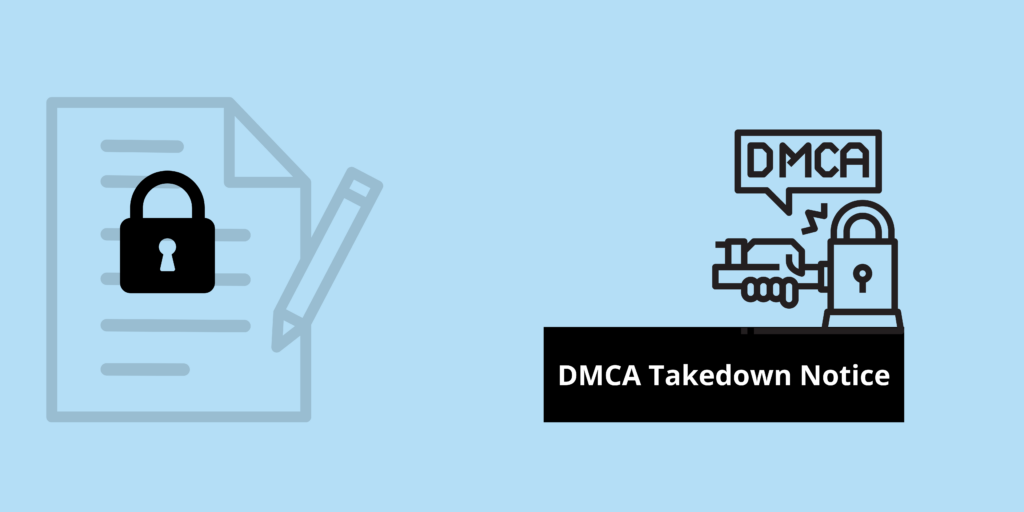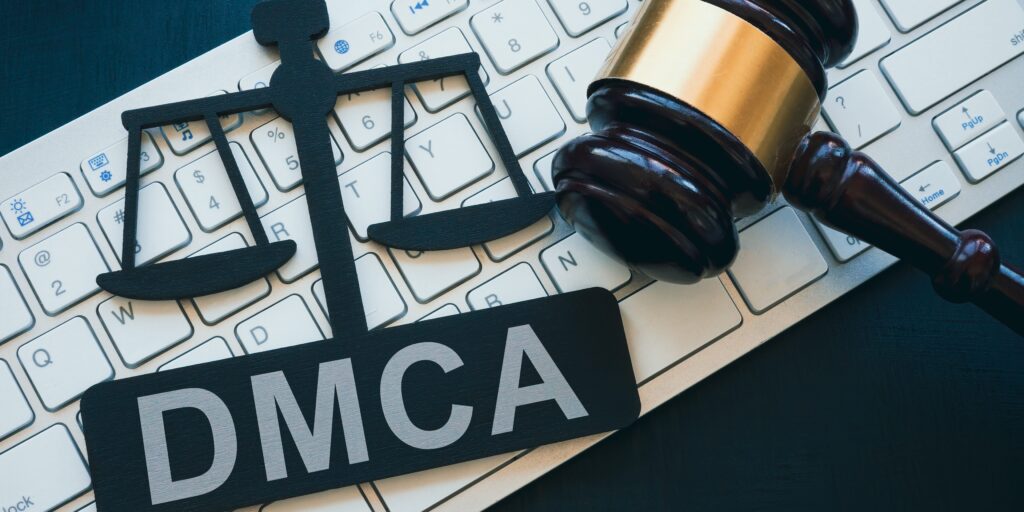How to send an effective DMCA takedown notice in 3 simple steps?

Navigating the world of online content can be tricky, especially when it comes to protecting your intellectual property. The DMCA takedown notice is a powerful tool in your arsenal for safeguarding your work. This guide breaks down the process of DMCA takedown notice into three steps, ensuring you can act effectively and legally to address copyright infringement.
Table of Contents
Introduction
The Digital Millennium Copyright Act (DMCA) is a crucial piece of legislation that governs copyright protection in the digital age. In this section, we’ll delve into the fundamentals of DMCA takedown notices, their history, purpose, and the key provisions that shape copyright enforcement online.
Understanding DMCA
To fully grasp the significance of DMCA takedown notices, it’s essential to understand the DMCA itself. We’ll provide an overview of its origins and objectives, emphasizing its role in combating copyright infringement in the digital world.
Quick Overview
A DMCA takedown notice is a formal request made to a service provider, asking them to remove or disable access to material that is alleged to be infringing on copyright. This tool is widely used by copyright owners to protect their intellectual property in the digital realm.
Legal Basis
The legal foundation for DMCA takedown notices is found in the Digital Millennium Copyright Act of 1998, particularly in Title 17, Section 512 of the United States Code. This legislation was enacted to address the challenges of protecting copyright in the rapidly evolving digital world. It offers a balanced approach, allowing copyright owners to assert their rights while providing safe harbor provisions for service providers, given they comply with specific requirements.
Key Elements of the DMCA
- Safe Harbor Provisions: These protect online service providers (like ISPs, hosting services, or websites) from liability for copyright infringement if they follow certain procedures, including responding to DMCA takedown notices.
- Notice-and-Takedown System: The DMCA establishes a system where copyright owners can notify service providers of alleged infringements. Upon receiving a valid notice, the provider must promptly remove or disable access to the material.
- Counter-Notice and Put-Back: The DMCA also provides a mechanism for content posters to dispute a takedown by submitting a counter-notice. If a service provider receives a valid counter-notice, they can restore the content unless the copyright owner files a lawsuit within a certain timeframe.
Why It’s Important?
- Protection of Intellectual Property: In an era where digital content can be easily copied and distributed, the DMCA gives creators a powerful tool to protect their work.
- Legal Framework for Online Platforms: It offers a clear legal process for handling copyright complaints, which is crucial for websites and online platforms that host user-generated content.
- Balancing Interests: The DMCA attempts to balance the rights of copyright owners with the need for freedom of expression and the practical realities of hosting content on the Internet.
Step-by-Step Guide to Sending a DMCA Takedown Notice
Sending a DMCA takedown notice involves a series of well-defined steps. This guide outlines the process, helping you ensure that your notice is both effective and compliant with legal requirements.

Step 1: Identify Infringement
The first step is to identify and document the unauthorized use of your content. This involves:
- Locating Your Content: Find where your copyrighted work is being used without permission. This could be on websites, social media platforms, blogs, or other digital mediums.
- Gathering Evidence: Document the infringement by taking screenshots or noting URLs where your content appears. This helps establish a clear case of unauthorized use.
Step 2: Draft the Notice
A DMCA takedown notice must contain specific elements to be considered valid. These include:
- Your Contact Information: Include your full name, address, phone number, and email address. This is necessary for the service provider to contact you if needed.
- Description of Copyrighted Work: Clearly describe the work that you claim has been infringed. If you have multiple works infringed, list them all.
- Location of Infringing Material: Provide the exact URLs or sufficient information to locate the material on the service provider’s platform. Be as specific as possible to avoid any confusion.
- Good Faith Statement: Include a statement that you believe in good faith that the use of the material in the manner complained of is not authorized by you, your agent, or the law.
- Perjury Statement: This is a declaration that the information in the notice is accurate, and under penalty of perjury, you are authorized to act on behalf of the copyright owner.
- Physical or Electronic Signature: Sign the notice. If you’re submitting electronically, typing your full name can act as your signature.
Step 3: Send the Notice
Finally, send your completed DMCA takedown notice to the designated DMCA agent of the website or platform hosting the infringing content. This information is typically found in the website’s “Terms of Service” or a similar section. Most service providers prefer receiving these notices via email, but some might require physical mail.
Tips for Sending the Notice:
- Use the Official Channels: Always send the notice to the designated DMCA agent or the official contact provided by the service provider.
- Be Professional and Polite: Keep your communication professional. Aggressive or accusatory language is unnecessary and can be counterproductive.
- Keep Records: Save a copy of your notice and any correspondence related to it. This can be crucial if there are further legal proceedings.
You can also read – Cyber Security Terms
What to do after Sending the DMCA Takedown Notice?
Once you’ve sent your DMCA takedown notice, there are several possible outcomes and subsequent steps to be aware of. Understanding these will help you navigate the post-notice process effectively.
Expected Outcomes
After the service provider receives your notice, they will typically:
- Review the Notice: The service provider will first ensure that your notice complies with the legal requirements of the DMCA.
- Remove or Disable Access: If the notice is deemed valid, the provider is obligated to remove or disable access to the alleged infringing material promptly.
- Notify the Uploader: The provider will inform the uploader of the content about the takedown action.
Handling Counter Notices
In some cases, the uploader of the content may disagree with the takedown and issue a counter-notice. Here’s how to handle that:
Review the Counter Notice: The service provider will send you the counter notice. Ensure it meets the legal requirements, including a statement under penalty of perjury that the uploader believes the content was removed mistakenly or misidentified.
Respond Appropriately: If you receive a counter-notice, you have two options:
- Do Nothing: If you choose not to pursue legal action, the service provider may restore the content within 10 to 14 business days.
- Legal Action: If you still believe your rights are being infringed, your next step is to seek legal action. The content will remain down during this period.
What are the Common Mistakes to Avoid?
When dealing with DMCA takedown notices, there are several pitfalls you should be aware of to ensure your actions are effective and legal.
Legal Pitfalls
- Misidentifying Content: Ensure that the content you’re targeting is indeed infringing on your work. Mistakenly targeting non-infringing content can lead to legal complications.
- Inaccurate Information: Providing false information in your notice, especially in the perjury statement, can have serious legal repercussions.
- Ignoring Fair Use: Be mindful of the fair use doctrine, which allows limited use of copyrighted material without permission for purposes like criticism, news reporting, teaching, and scholarship.
Ethical Considerations
- Abusing the DMCA Process: Using DMCA notices to censor content, harass creators, or suppress legitimate uses can lead to ethical and legal challenges.
- Lack of Due Diligence: Before issuing a notice, conduct thorough research to confirm the infringement. This helps maintain the integrity of the DMCA process.
Handling Counter-Notices and Disputes
When you receive a counter-notice, it’s important to assess it critically:
- Validity of the Counter-Claim: Determine if the counter-notice has merit. Sometimes, the content may indeed fall under fair use or the claimant might have the necessary rights.
- Legal Consultation: If in doubt, consult with a legal professional. This can clarify how to proceed, especially if you’re considering legal action.
What are the real-world examples where a DMCA Takedown Notice can be used?
Examining real-world scenarios where DMCA takedown notices were used can offer valuable insights into the practical application of this legal tool. Let’s delve into some case studies:
Case Studies
Case Study 1: A Popular Music Video on YouTube
- Scenario: An artist discovered their music video re-uploaded by another user on YouTube.
- Action: The artist issued a DMCA takedown notice to YouTube.
- Outcome: YouTube quickly removed the re-uploaded video, respecting the original copyright holder’s rights.
Case Study 2: Blog Content Republished without Permission
- Scenario: A blogger found their entire article republished on another website without credit or permission.
- Action: The blogger sent a DMCA notice to the website’s hosting service.
- Outcome: The hosting service took down the article, and the infringing website later reached out to the blogger to negotiate legitimate use of the content.
Case Study 3: Misuse of Photographs on an E-commerce Site
- Scenario: A photographer discovered their copyrighted images being used on an e-commerce site to sell products.
- Action: The photographer filed a DMCA takedown notice against the e-commerce site.
- Outcome: The e-commerce site removed the images and apologized, citing a mistake by their web designer.
Conclusion
Understanding and effectively using DMCA takedown notices is crucial for protecting your intellectual property in the digital space. This guide has walked you through the key steps and considerations, from identifying infringement to drafting and sending a notice, and dealing with potential counter-notices. The real-world examples and FAQs provided further insights into the practicalities and complexities of the DMCA process.
Remember, while the DMCA is a powerful tool, it should be used responsibly and ethically, respecting both your rights and those of others in the online community. Being informed and cautious in your approach will help you navigate copyright issues effectively, maintaining the integrity of your work and the digital ecosystem at large.
You can also visit – Phishing Takedown Services
FAQs
What happens if my DMCA takedown notice is ignored?
If the service provider does not respond to your notice, you may need to seek legal counsel to discuss further action, which could include a lawsuit.
Is it necessary to register my work for copyright before issuing a DMCA Takedown Notice?
Copyright exists from the moment of creation in a tangible form. Registration is not required to issue a DMCA notice, but it can provide additional legal benefits.
Can a DMCA takedown notice backfire?
Yes, if used improperly. Filing false or misleading DMCA notices can lead to legal action against you for damages caused by the wrongful takedown.






